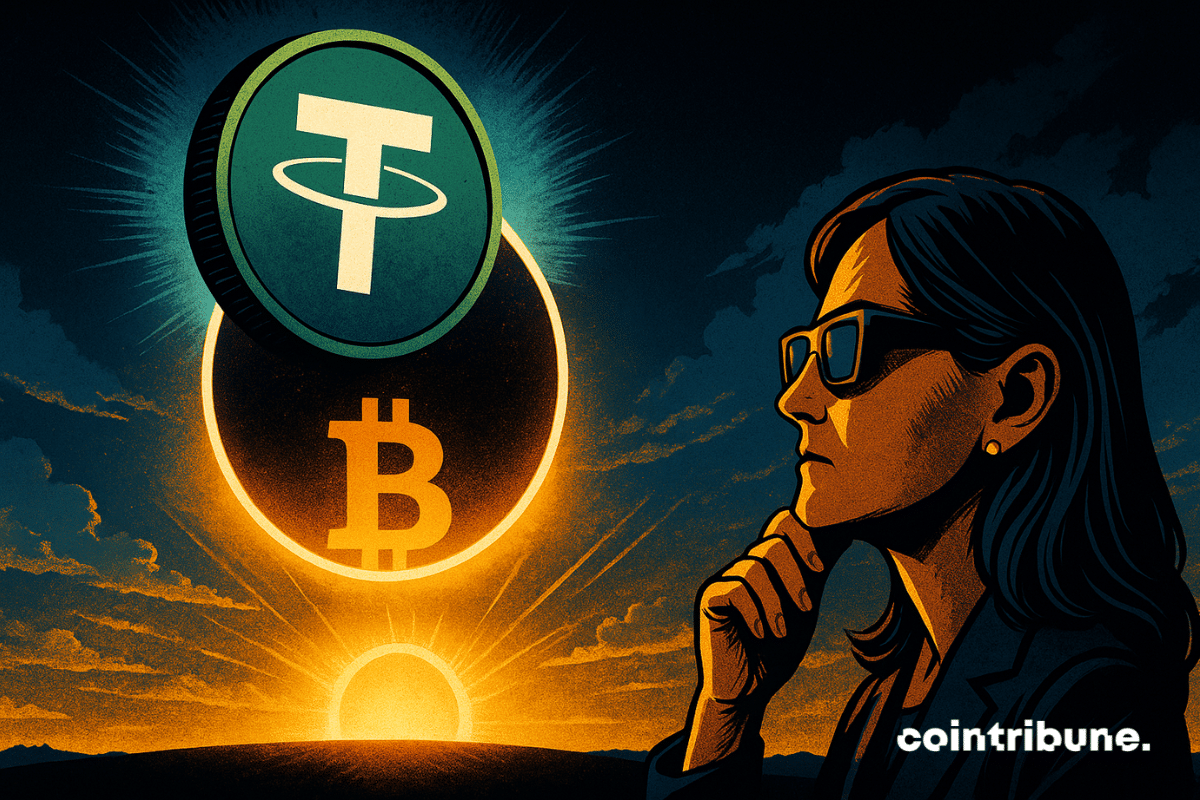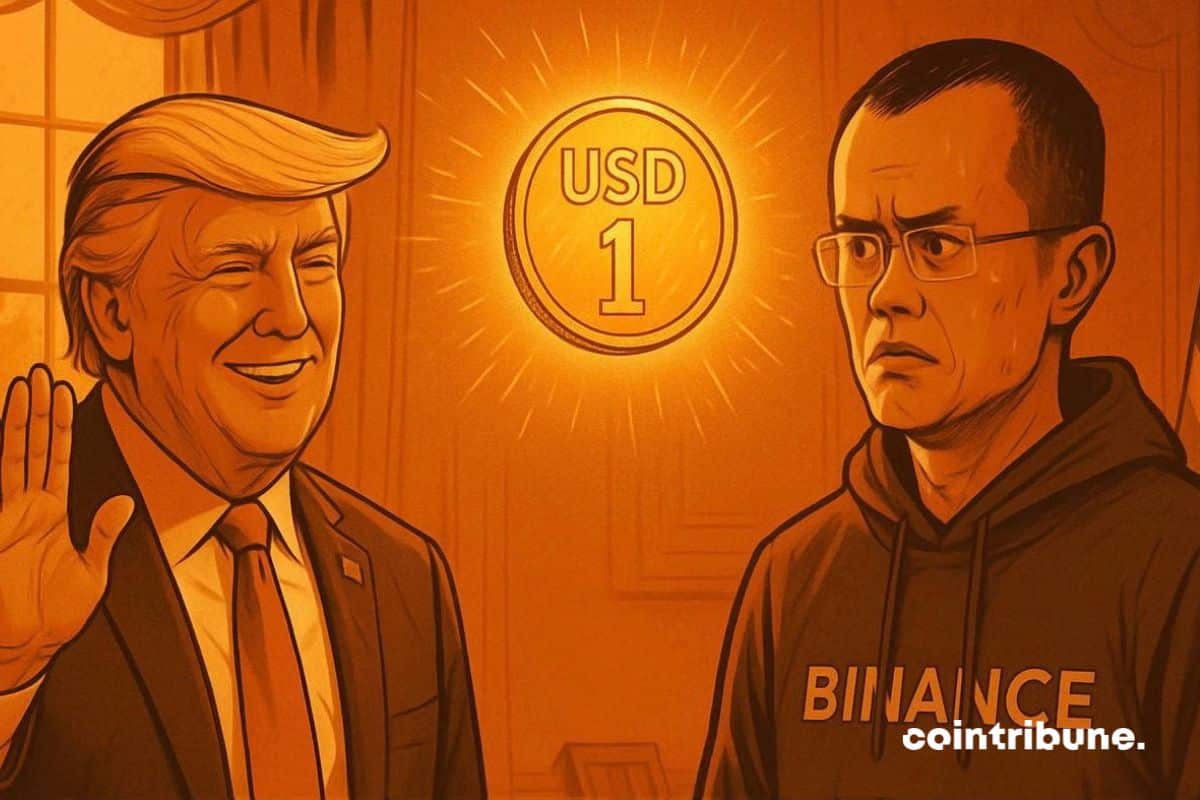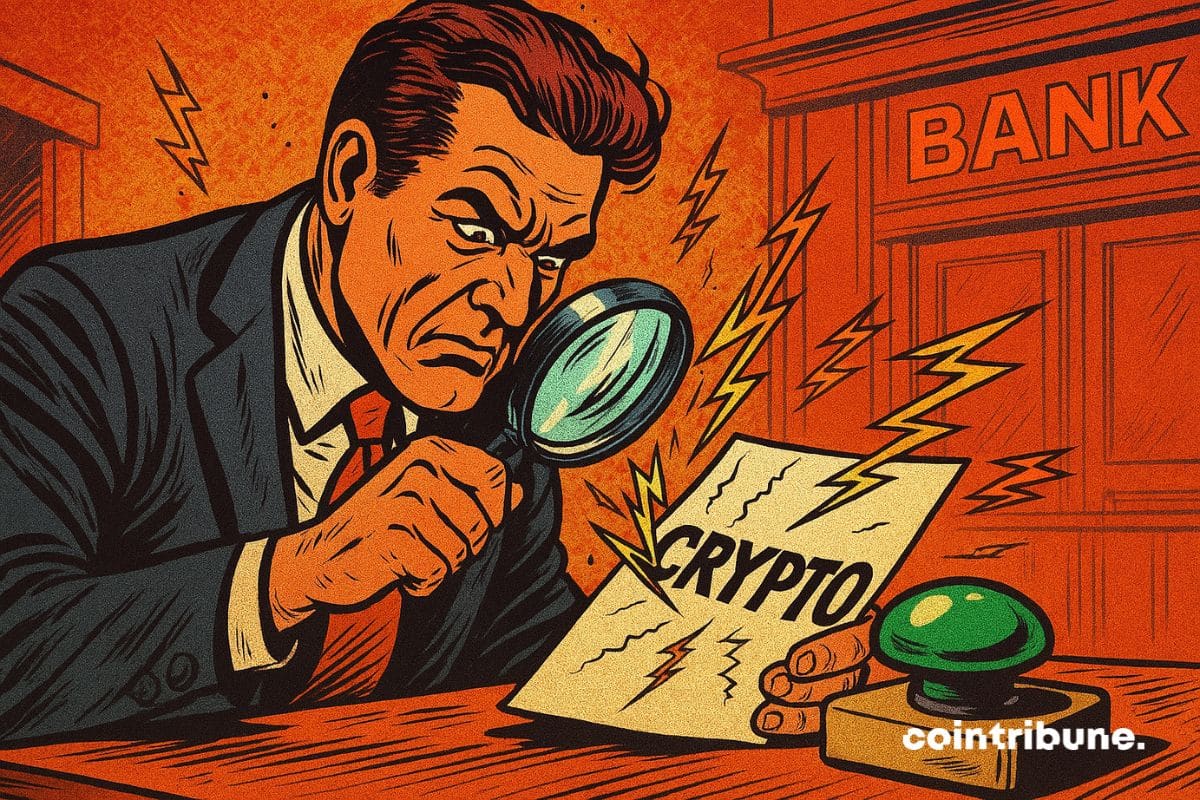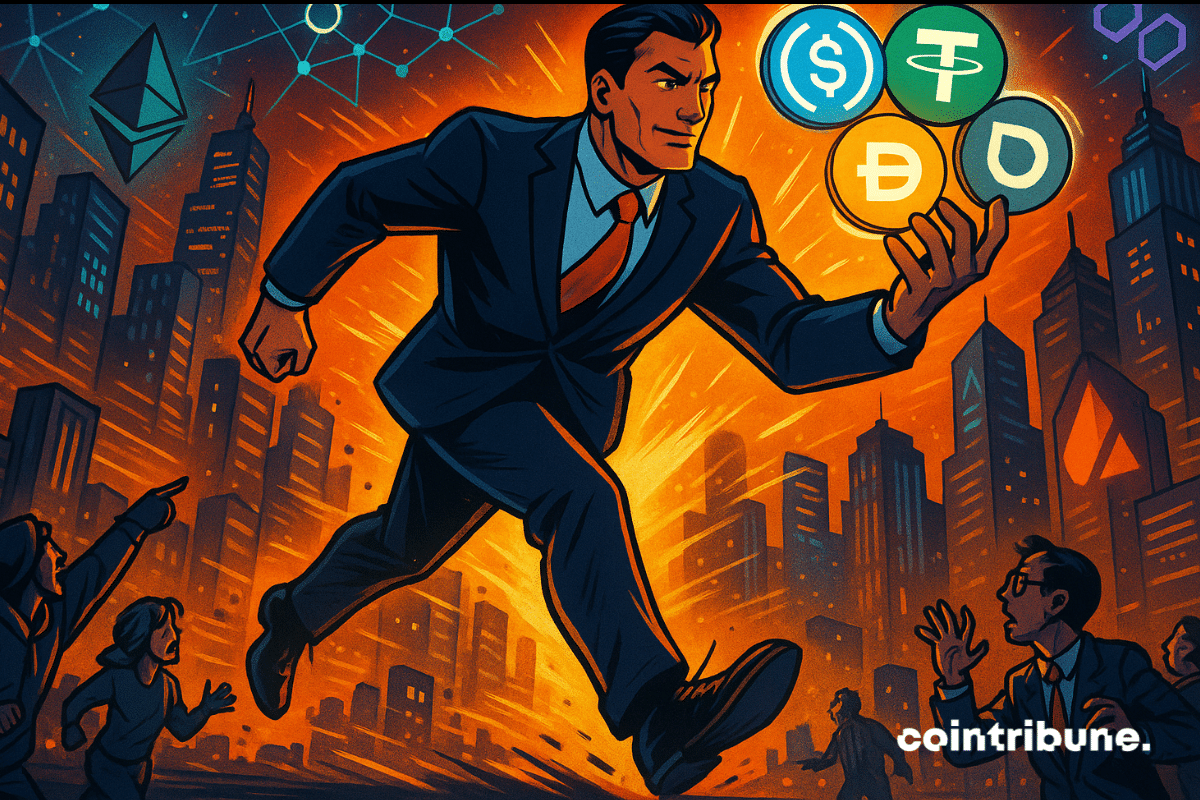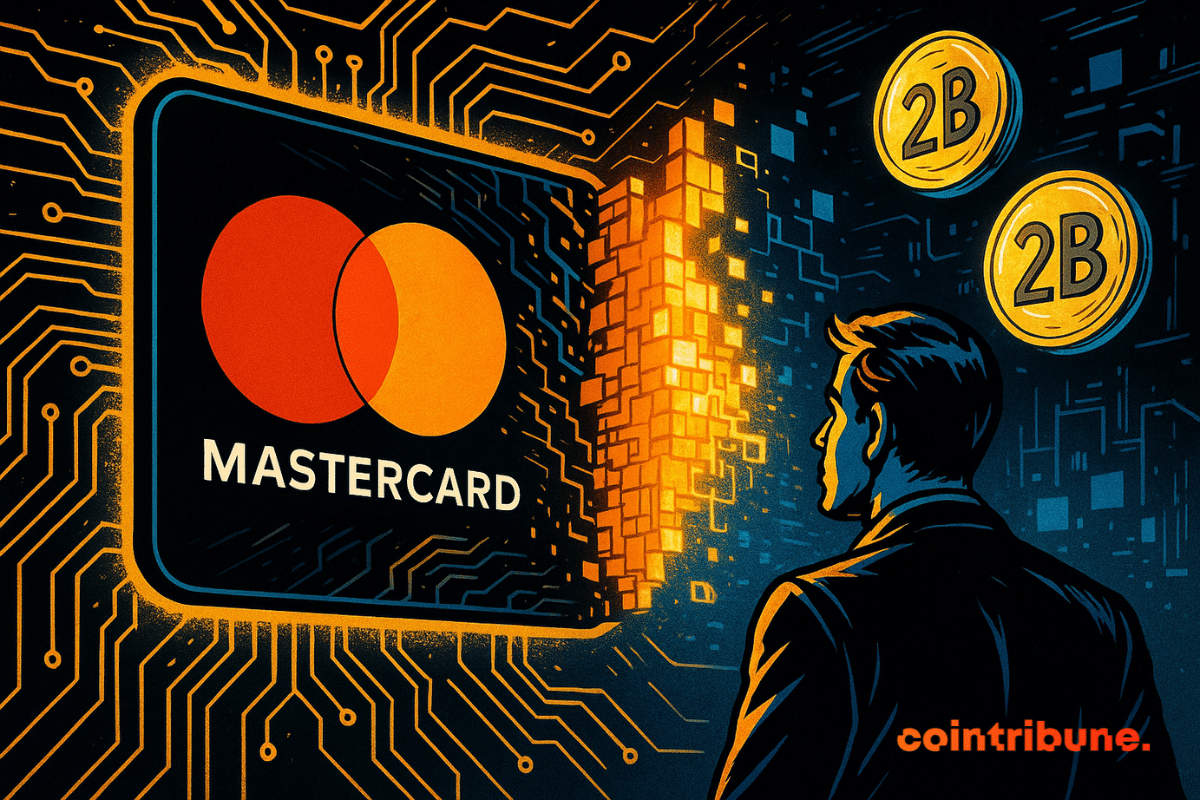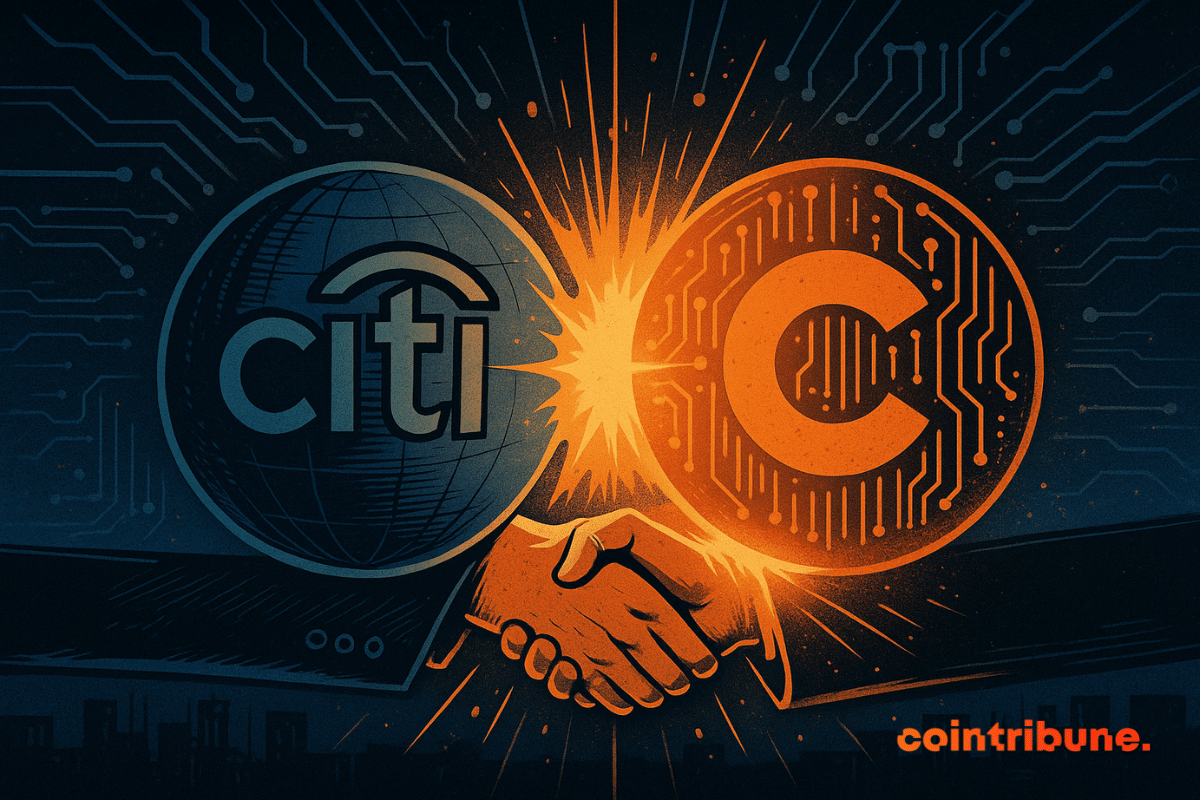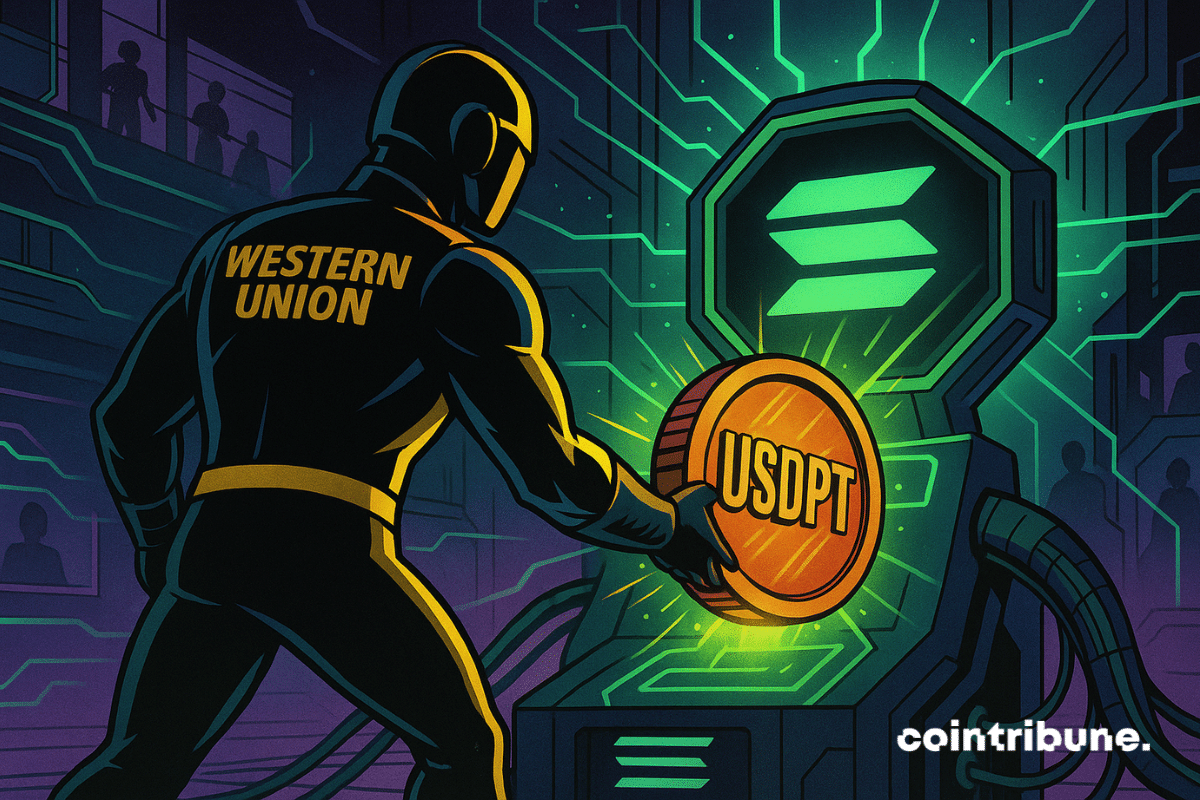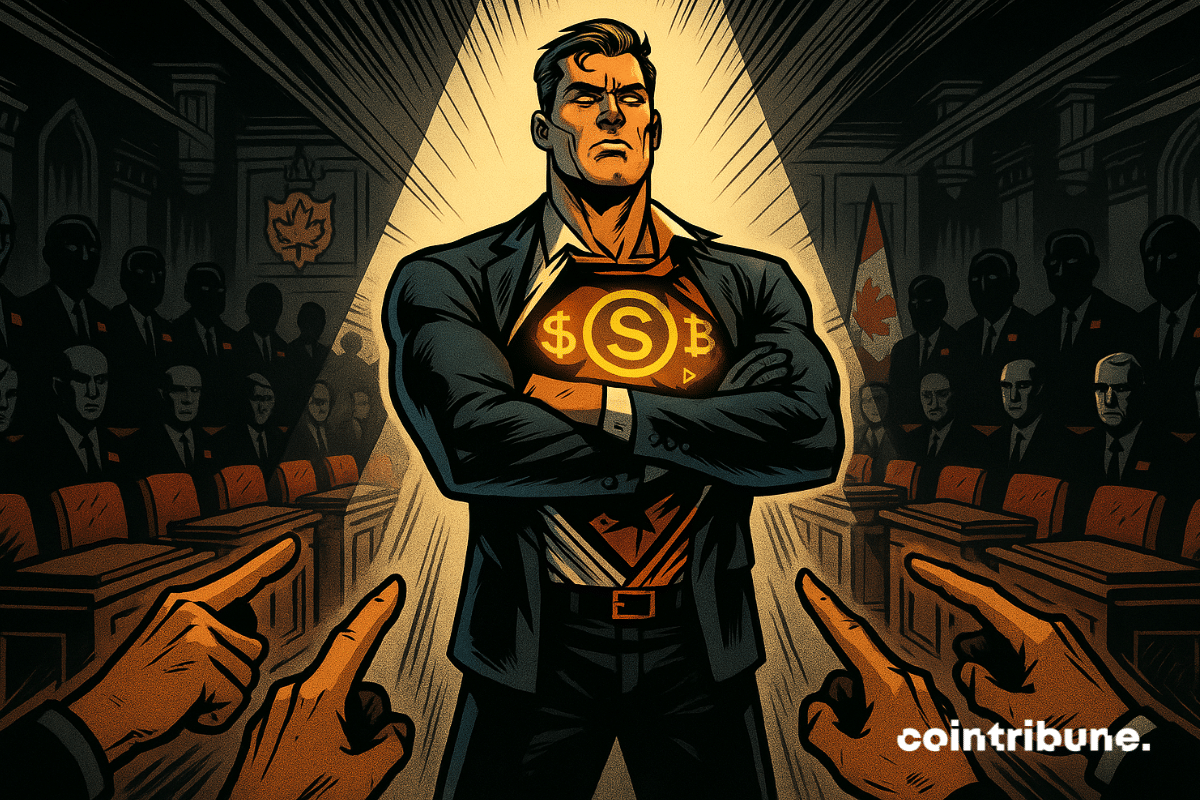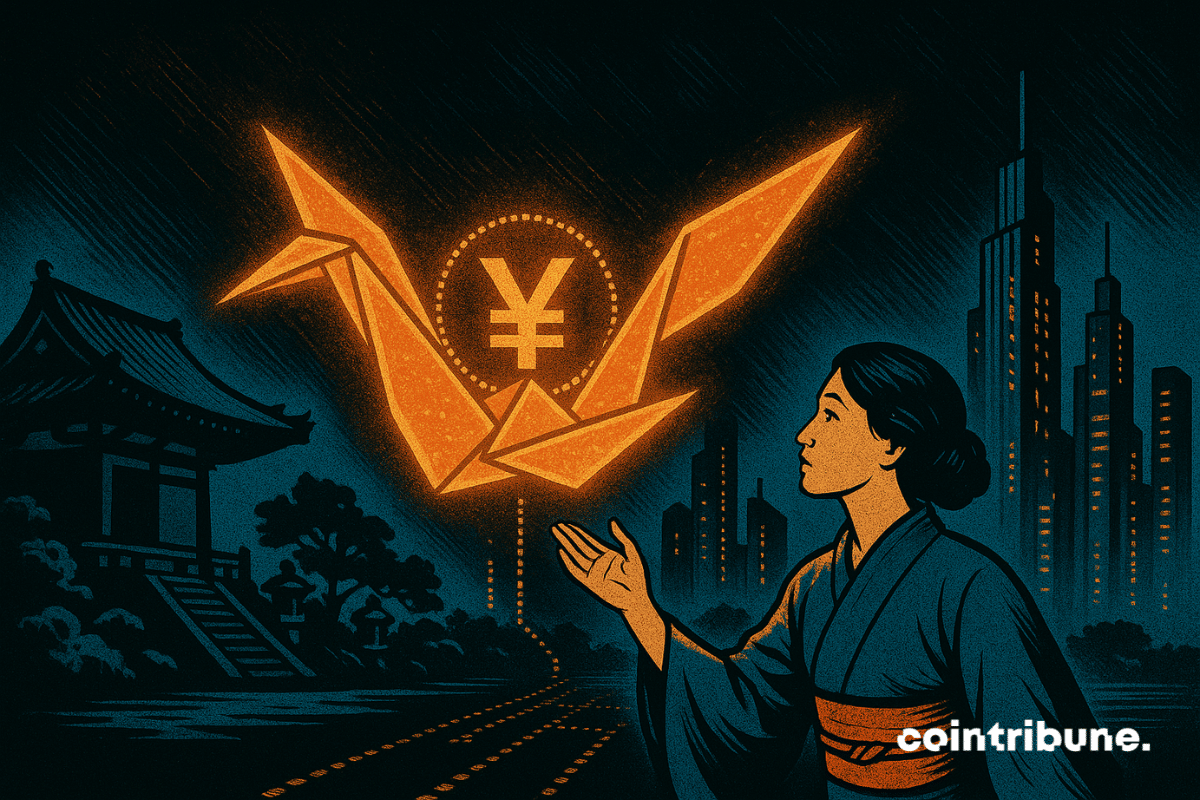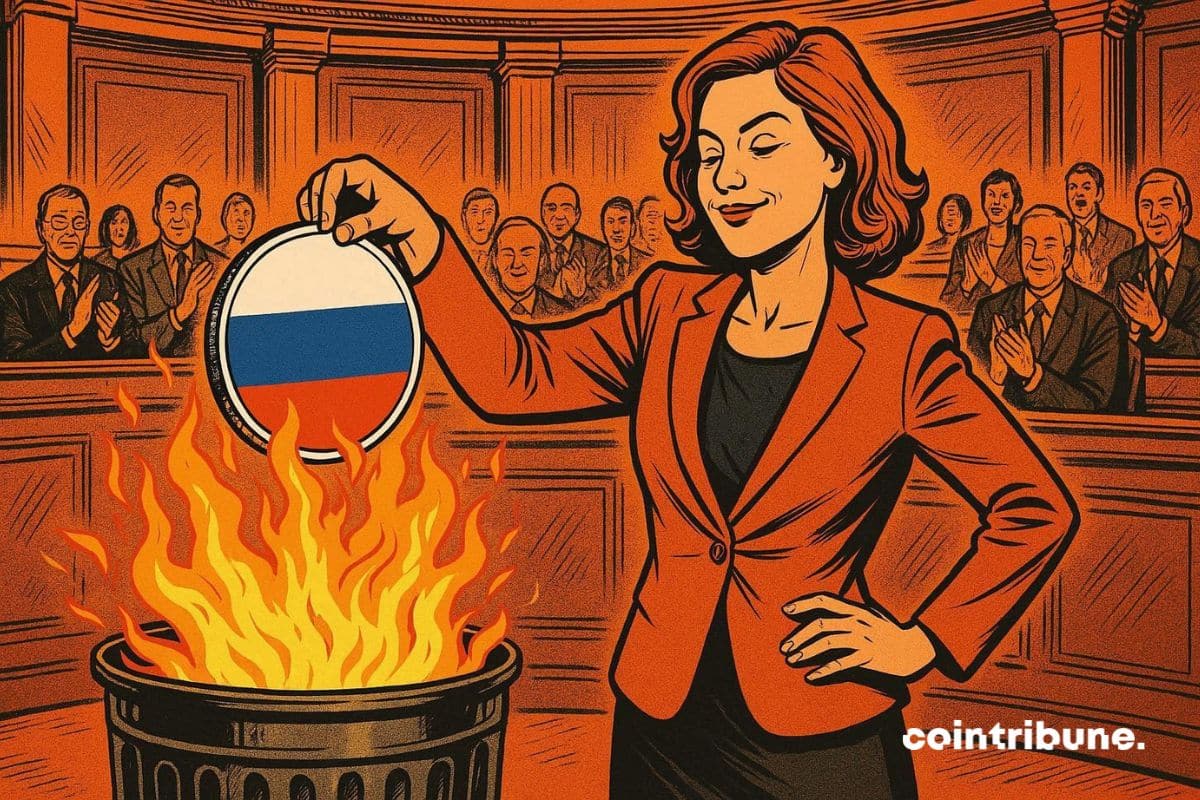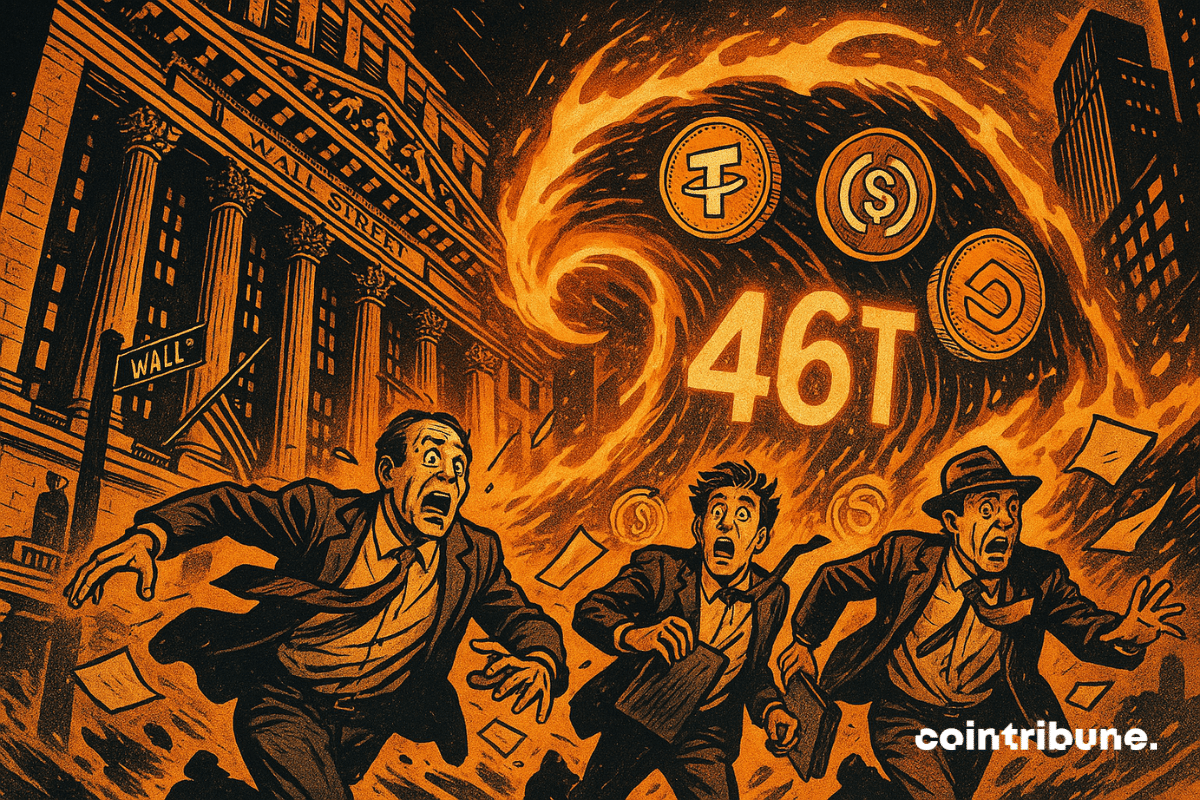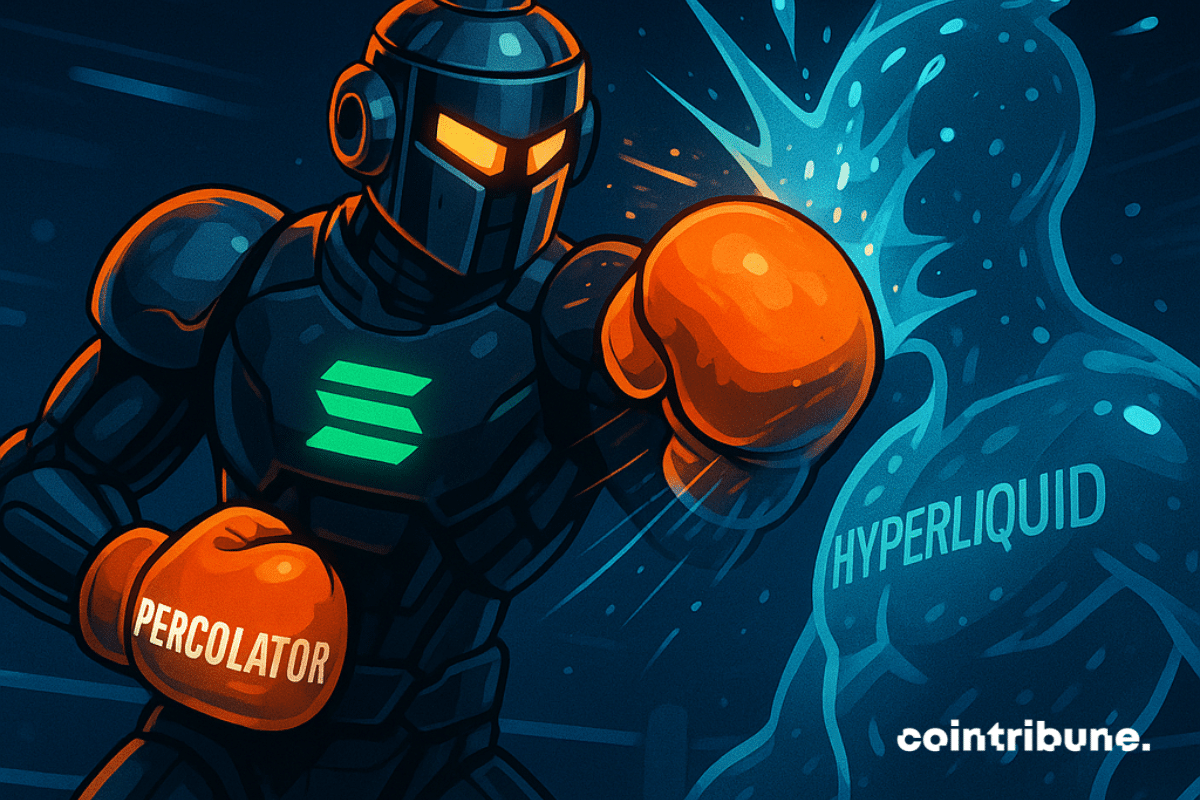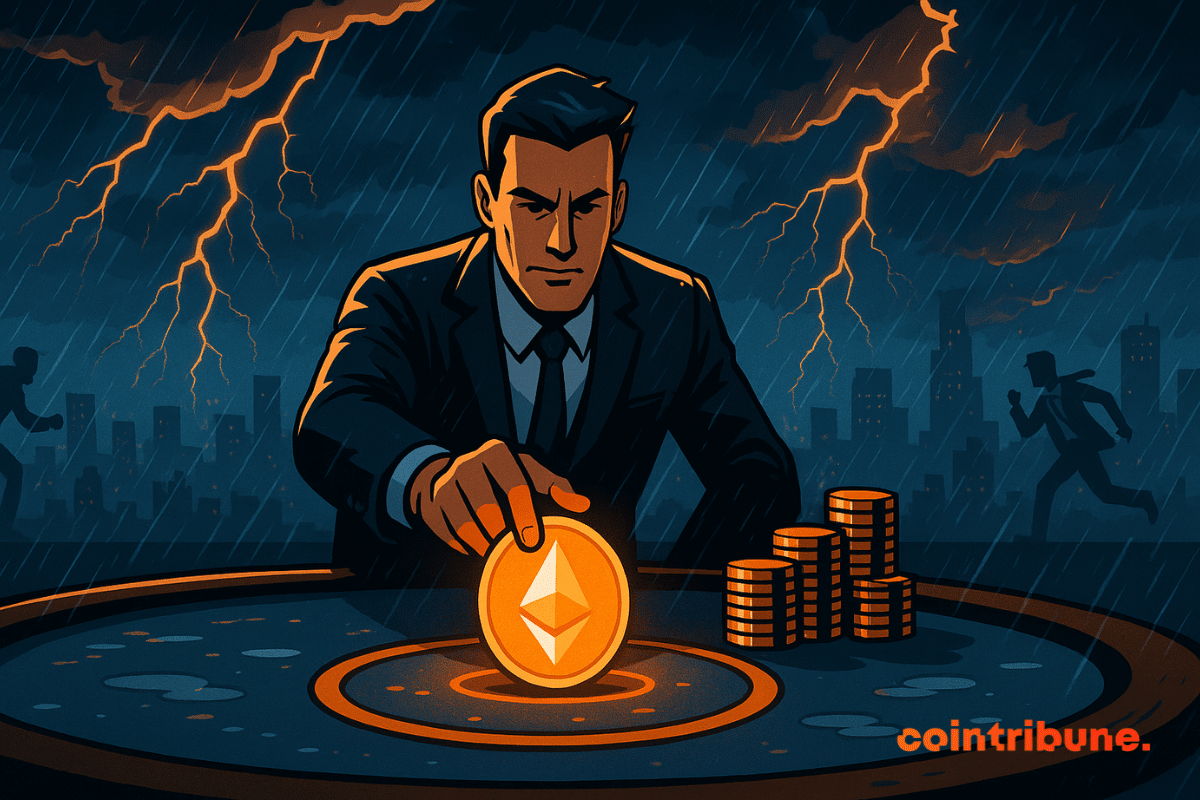Is Bitcoin losing ground where it was supposed to triumph? Cathie Wood, CEO of ARK Invest and a leading figure in crypto investment, has just lowered her most ambitious target for BTC. The reason is the rise of stablecoins in emerging economies, where they are establishing themselves as a new store of value. A strong strategic adjustment that questions the real role Bitcoin will play against these dollar-backed alternatives.
Theme Stablecoin
The boundary between crypto and politics is becoming clearer. By now allowing the legal purchase of firearms with USDC, Circle brings the issue of financial neutrality to the forefront. This decision, praised by some and contested by others, reveals tensions between the promise of decentralization and institutional realities, while reigniting the debate on what crypto can or cannot allow within a legal framework.
Ripple’s US dollar–pegged stablecoin, RLUSD, has rapidly climbed the ranks to become one of the top ten stablecoins by market capitalization. Less than a year after its December 2024 launch, RLUSD has surpassed the $1 billion mark—a milestone that reflects growing confidence in Ripple’s expanding digital asset ecosystem.
Richard Teng, CEO of Binance, breaks the silence: facing rumors of collusion with Donald Trump’s USD1 stablecoin, he firmly denies them. Between presidential pardons and crypto stakes, this case reveals the behind-the-scenes of a tense sector. Is the truth finally unveiled?
Ethereum stablecoin activity hit $2.82 trillion in October, exceeding September’s volume with USDC leading the market.
Coinbase is pushing to expand its stablecoin business through a potential $2 billion acquisition of BVNK, reflecting growing interest in crypto payment systems.
Tether has just crossed a dizzying threshold: more than $10 billion in profit in just nine months. Behind this extraordinary figure lies the rise of a key player in the crypto ecosystem. Issuer of the USDT, the most used stablecoin in the world, Tether impresses as much as it raises questions. This record profitability, revealed in its latest attestation report, triggers as much enthusiasm as concerns, especially in terms of transparency and regulation.
The Basel Committee's rules on cryptocurrencies could change the game in 2026. Between bank adoption of stablecoins and crypto integration, a financial revolution is underway. Are banks ready to take the leap? The answer could change everything for your investments.
Visa is incorporating four stablecoins across four blockchains to enhance global payments and streamline transactions.
Mastercard is in late-stage negotiations to acquire stablecoin infrastructure provider Zerohash for an estimated $1.5 to $2 billion, according to a Fortune report citing five people familiar with the matter. The deal would position Mastercard among a growing number of global financial firms investing heavily in blockchain-based payment technology.
U.S. bank Citi is taking a decisive step into digital payments by joining forces with Coinbase to pilot stablecoin transactions. The partnership marks a turning point in Wall Street’s embrace of blockchain-based money, following the U.S. GENIUS Act's approval earlier this year. As the stablecoin market heads toward a projected $4 trillion valuation by 2030, Citi’s move positions it at the forefront of institutional adoption.
Circle opens access to its Arc testnet, enabling developers and enterprises to explore new applications in digital finance.
Western Union enters the stablecoin arena with an announcement that shakes up the established order. The giant of cross-border transfers, founded in 1851, plans to launch its own dollar-backed token, USDPT, on the Solana blockchain in 2026. Facing increasing pressure from crypto fintechs, the company is making a strategic shift to modernize its payment rails. This project marks a key milestone in the reconfiguration of global financial networks, where speed, stability, and accessibility become essential standards.
Canada is working on a clear regulatory framework for stablecoins ahead of the November 4 federal budget, aiming to support domestic digital currency.
Japan has entered a new phase of digital finance with the launch of its first yen-backed stablecoin, JPYC. Developed by Tokyo-based fintech firm JPYC, the token aims to bring the stability of traditional finance into the expanding digital asset market—offering Japanese consumers and businesses a secure bridge between fiat and blockchain-based payments.
Facing the rise of crypto solutions, Western Union is undergoing a major transformation. The company is piloting the use of stablecoins for its cross-border settlements. Present in more than 200 countries, it aims to modernize its financial flows for 150 million customers. This shift, far from symbolic, reveals a clear desire to adapt to a new era where speed, cost reduction, and decentralized infrastructures redefine the standards of international transfers.
Tether, the world’s largest stablecoin issuer, is poised for another record year of profitability, reinforcing its dominance in the digital dollar market. As the global demand for blockchain-based payment systems accelerates, the company continues to stamp its dominance in the crypto space.
Direct competitor to YouTube, Rumble is now betting on crypto to attract its content creators. In partnership with Tether, the video platform is about to launch a Bitcoin tipping system. A bold strategy that could reshuffle the cards in the creator economy. But will this initiative be enough to reverse the trend for a stock that has plummeted heavily since the beginning of the year?
The EU hits Putin where it hurts: unprecedented sanctions against Russian cryptocurrencies, ban on the A7A5 stablecoin, and blocking of complicit platforms. Will the Kremlin retaliate? Discover how these measures could disrupt the economic war and Moscow's circumvention strategies.
Revolut, the well-groomed neobank, joins the European crypto dance with the MiCA license in pocket… and a stablecoin behind the scenes? A revolution in a tie that already irritates the old players.
Wall Street trembles, BlackRock applauds, and the dollar digitalizes without asking the Treasury's opinion… Stablecoins are taking hold, while crypto weaves its planetary monetary web.
The crypto train is definitely on track, and some believe it's time to get on board. But not everyone is rushing. Some large companies prefer to adjust their trajectory smoothly, first testing the brakes and signals. This is the case for Wise. Known for its regulatory caution, the British fintech today shows the first signs of a strategic turn. A measured change of tone, but with major consequences for the crypto industry.
Tether claims 500 million users for its stablecoin USDT, hitting an unprecedented milestone in digital finance. Behind this colossal figure, the company asserts its ambition: to become a pillar of global financial inclusion. As USDT establishes itself in daily use, especially in emerging economies, Tether is now extending its influence towards a new strategic area: global regulation. More than a mere record, this announcement marks the rise of a player who has become central to the monetary architecture of Web3.
The crypto world is a battlefield where innovation allows no respite. After the meteoric rise of Hyperliquid and the breakthrough of Aster, Solana responds with a project designed for speed and scalability: Percolator. Announced by Anatoly Yakovenko, this new perpetual contracts DEX could reshuffle the decentralized trading cards. Behind the evocative name lies a vision: that of a crypto exchange engine without compromise, where on-chain performance finally meets the simplicity of a centralized exchange.
Stablecoins are rapidly expanding across Asia as countries explore new regulations and innovation to integrate digital assets with traditional finance.
While the crypto market goes through a period of turbulence marked by the erasure of 350 billion dollars in four days, BitMine Immersion Technologies continues its massive Ether purchases. The company has accumulated 1.5 billion dollars worth of the crypto since last weekend's crash. But can this aggressive strategy withstand Tom Lee's fears about the bursting of a speculative bubble?
The cryptocurrency market extended its turnaround throughout three consecutive quarters into Q3 2025, propelling total capitalization to levels last observed in late 2021. According to CoinGecko, the sector added $563.6 billion in Q3, representing a 16.4% increase and bringing the industry to approximately $4.0 trillion.
Ripple is broadening its financial services by integrating GTreasury’s treasury management platform, aiming to streamline liquidity, digital asset management, and cross-border payments for major corporations.
The GENIUS law, presented as the solution to secure stablecoins, hides alarming flaws according to the Federal Reserve (Fed). Michael Barr sounds the alarm: systemic risks, regulatory arbitrage, and threats to your crypto investments. Are stablecoins really stable?
What if Europe finally disrupted the established order of stablecoins? Oddo BHF launches EUROD, a 100% euro stablecoin, challenging the dollar's dominance in crypto. A financial revolution underway! Discover the stakes and challenges of this innovation that could change everything.
